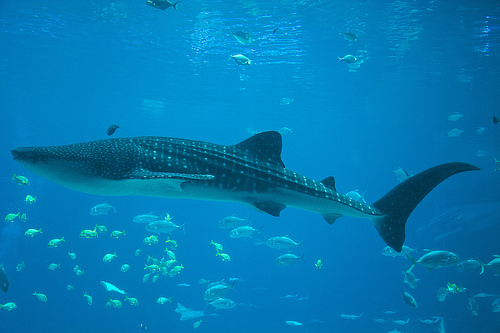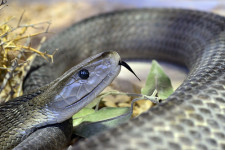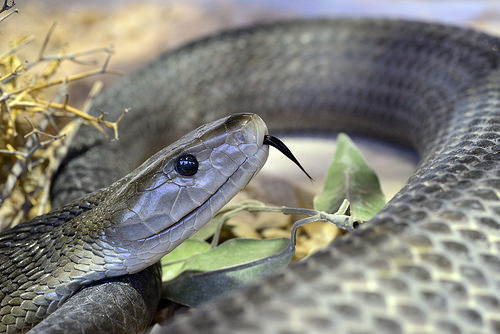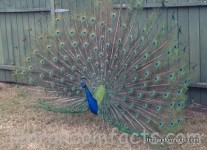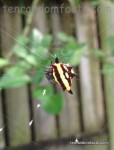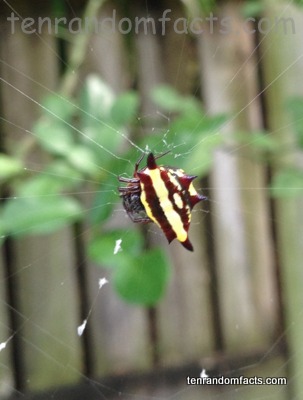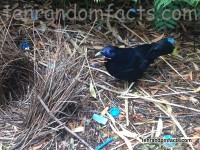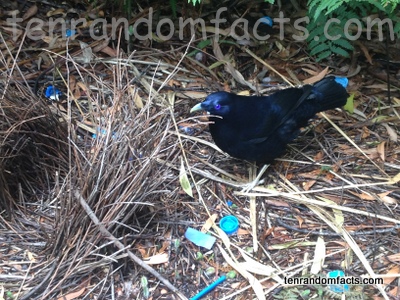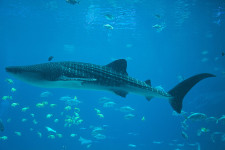
Whale sharks have a whale of a time in the ocean.
- Whale sharks are large fish found in the warm central oceans of the Earth, and they can be found in coastal areas as well as deeper waters.
- The scientific name of the whale shark is Rhincodon typus and it is the only member of the family Rhincodontidae.
- ‘Whale sharks’ are also known as ‘butanding’, ‘balilan’, and ‘tofu sharks’ in various Asian cultures, and in Spanish they are called ‘tiburón ballena’.
- Whale sharks generally reach a length between 5.5 and 14 metres (18 to 46 feet), though they can be up to 20 metres (65.6 feet) in length, and are the largest fish alive today.
- Whale sharks are brown to dark grey in colour, with light grey on the underside, and they are patterned with spots and stripes.
Whale Shark
Image courtesy of wpylnn/Flickr
- The weight of whale sharks generally ranges from roughly 9 to 20 tonnes (9.9 to 22 tons), and they can be as heavy as 31 tonnes (34 tons).
- The diet of whale sharks consists of plankton, small fish and small squid gathered by the filter feeding technique, and their food filtering system can capture anything as fine as one millimetre (0.04 inches).
- Numbers of whale sharks have been decreasing, primarily due to humans hunting them for meat, oil and other products; and as such, they are considered a vulnerable species.
- Whale sharks can reach 50 to 100 years in age and possibly more, and they grow notably quickly in their early life.
- A female whale shark gives birth to live offspring, though they hatch from eggs inside her body, and she can produce 300 young that are 40 to 70 centimetres (15.7 to 27.6 inches) long when they are released.
Bibliography:
Calleros P & Vazquez J, Rhincodon typus, 2012, Animal Diversity Web, http://animaldiversity.org/accounts/Rhincodon_typus/
Whale Shark, 2011, Government of Western Australia, http://www.fish.wa.gov.au/Documents/recreational_fishing/fact_sheets/fact_sheet_whale_shark.pdf
Whale Shark, 2016, A-Z Animals, http://a-z-animals.com/animals/whale-shark/
Whale Shark, 2016, National Geographic, http://animals.nationalgeographic.com.au/animals/fish/whale-shark/
Whale Shark, 2016, Wikipedia, https://en.wikipedia.org/wiki/Whale_shark





